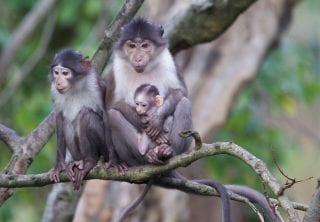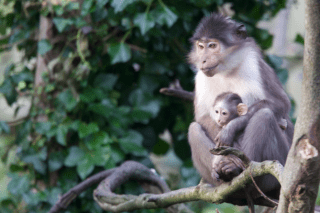Fun facts
Communication
Mangabeys communicate using shrieks, whoops and grunts, as well as by blinking their white eyelids and using other facial gestures.
Storing food
White-naped mangabeys have large cheek pouches that they use to store food in.
Stone comb
Some species of mangabey have been observed grooming their infants using a stone.



